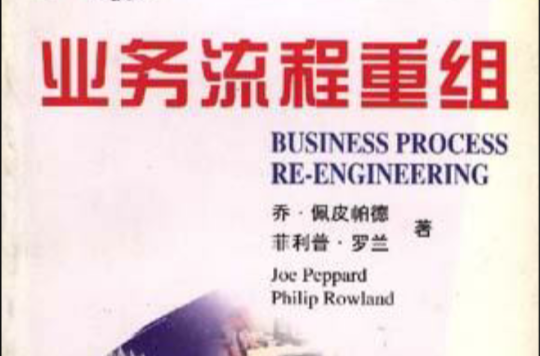《業務流程重組--工商管理精要系列·影印版》是1997年中國人民大學出版社出版的圖書,作者是喬.佩皮帕德菲利普.。
基本介紹
- 作者:喬.佩皮帕德 菲利普.
- ISBN:9787300024868
- 定價:31.00
- 出版社:中國人民大學出版社
- 出版時間:1997-10
- 裝幀:平裝
內容介紹,作品目錄,
內容介紹
什麼是業務流程重組?
從其他改進管理的理念中能學到些什麼?
是什麼原理在控制著產品和服務流程的設計過程?
企業應該怎樣實施業務流程的重組?
企業怎樣才能保證業務流程重組的效益得以實現?
本書對上述問題及其他有關問題作了清楚而確切的解釋。
對於那些接受短期培訓的管理者、MBA,以及想迅速了解這
一問題核心內容的教師和學生來說,都不失為極具價值的參考
書。它還可以作為管理人員的藏書,以及那些有抱負的管理人
員完善自己知識和技能的參考資料。
作品目錄
Contents
Part 1: Business Process Re-engineering
1 What is Business Process Re-engineering?
The traditional organization
Business Process Re-engineering - just the latest
management fad?
Summary
References
2 The imperative to re-engineer business processes
The new market-place - the war zone
The public sector
Economics
The rise of quality
The IT black hole
Deciding on BPR
Summary
References
Part 2: Underiying principles
3 Product and service delivery processes
The service task
New product development
Components of an organization
Lead time
Capacity management
Inventory management
Quality management
Performance measurement
Managing the front office
Managing the back office in a manufacturing firm
Managing the back office in a service firm
An overall process design
Summary
References
4 Organizing people: new organizational blueprints
Culture
Organization - teams
Organization - functions
Empowerment
Behaviour, skills and development
Recruitment and selection
Pay and rewards
Training and development
Making the most of people: the learning organization
Summary
References
5 Exploiting information technology
Information as a factor of production
Artificial intelligence
Communications
Multimedia
Virtual reality
Workflow automation
Issues surrounding IT
Summary of key points
References
Part 3: Making it happen
6 Redesigning processes
Process redesign - doing it
Where to start
Understand existing process
Stationery requests - an example
Systematic redesign - of an existing process
Clean sheet - designing a new process
Summary
References
7 Realizing the benefits: managing change
Create the environment
Analyse diagnose and redesign processes
Redesign the organization's infrastructure
Pilot and roll-out
Realize vision
Flows between the five stages
Issues of power and politics
Summary
References
8 Succeeding at BPR
Some guidelines for success
Pitfalls to avoid
References
Epilogue
Further reading
Index
Part 1: Business Process Re-engineering
1 What is Business Process Re-engineering?
The traditional organization
Business Process Re-engineering - just the latest
management fad?
Summary
References
2 The imperative to re-engineer business processes
The new market-place - the war zone
The public sector
Economics
The rise of quality
The IT black hole
Deciding on BPR
Summary
References
Part 2: Underiying principles
3 Product and service delivery processes
The service task
New product development
Components of an organization
Lead time
Capacity management
Inventory management
Quality management
Performance measurement
Managing the front office
Managing the back office in a manufacturing firm
Managing the back office in a service firm
An overall process design
Summary
References
4 Organizing people: new organizational blueprints
Culture
Organization - teams
Organization - functions
Empowerment
Behaviour, skills and development
Recruitment and selection
Pay and rewards
Training and development
Making the most of people: the learning organization
Summary
References
5 Exploiting information technology
Information as a factor of production
Artificial intelligence
Communications
Multimedia
Virtual reality
Workflow automation
Issues surrounding IT
Summary of key points
References
Part 3: Making it happen
6 Redesigning processes
Process redesign - doing it
Where to start
Understand existing process
Stationery requests - an example
Systematic redesign - of an existing process
Clean sheet - designing a new process
Summary
References
7 Realizing the benefits: managing change
Create the environment
Analyse diagnose and redesign processes
Redesign the organization's infrastructure
Pilot and roll-out
Realize vision
Flows between the five stages
Issues of power and politics
Summary
References
8 Succeeding at BPR
Some guidelines for success
Pitfalls to avoid
References
Epilogue
Further reading
Index

